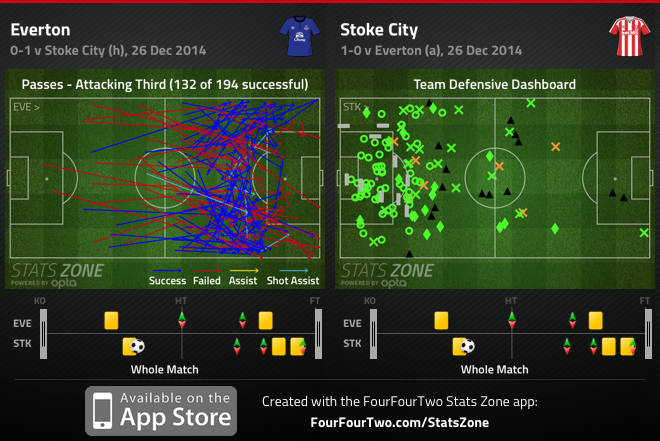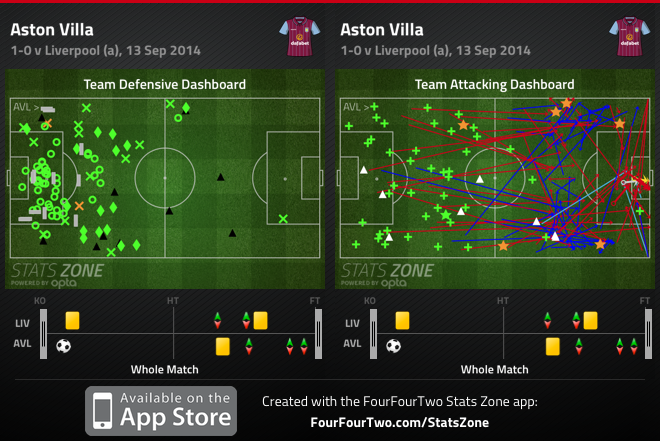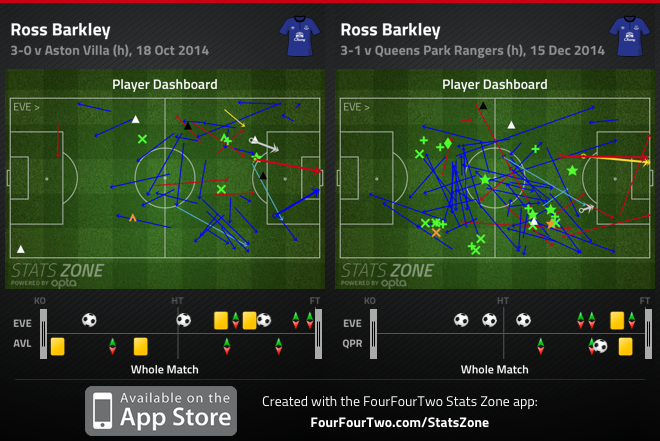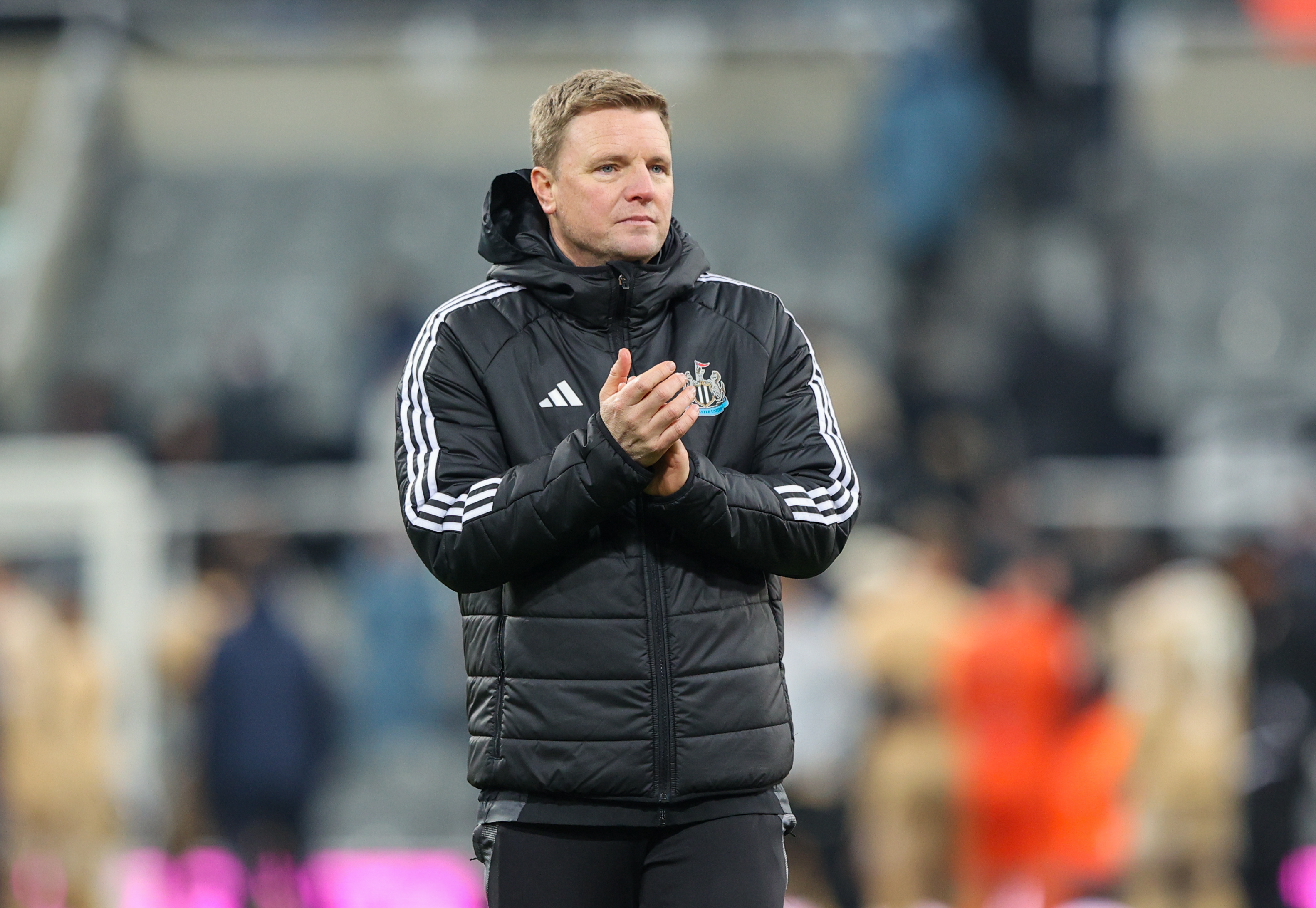The Everton star who could bring Man City's run to a halt – and fix their own bad one
Alex Keble picks out the Toffees' main man for Saturday's hosting of the champions on Merseyside...

Ross Barkley vs Man City's leaky defence
As Roberto Martinez has correctly identified, Everton's creative deficiency and abysmal points tally are, in part, the result of the deep-lying defensive strategies of opposition sides; his team average 57.3% possession with 536 passes made per match – the fourth highest in the league – despite sitting miserably in 13th.
This is no coincidence, and as teams around Europe finally figure out how to counteract high pressing, short-passing tactical philosophies, it is up to Martinez to adapt. Alongside the evolution of a lower-tempo, possession-based game, weaker teams are increasingly sitting extremely deep with compact defensive lines, absorbing pressure and focusing solely on defending in the final third.

In their 1-0 defeat against Stoke, Mark Hughes's side formed a tortoise-shell defence, and watched as a predictable Everton side passed the ball neatly, and aimlessly, in front of them.
With the attacking team, in this case Everton, holding a high defensive line (2.5 offsides in their favour per game is the division's most) and pressing hard in high areas of the pitch, there are enormous spaces left in behind for the opposition to counter-attack with speed and directness. Sunderland, Stoke, and Aston Villa offer the most strictly disciplined examples of this system.

Villa are masters of this style; at Anfield, they sat back patiently, using Gabby Agbonlahor's pace on the counter.
As a result of this effective counter-strategy, the more successful clubs have begun to tweak their tactical models to include a high-tempo playmaker who can distribute into dangerous wide areas faster.
Get FourFourTwo Newsletter
The best features, fun and footballing quizzes, straight to your inbox every week.
Gylfi Sigurdsson at Swansea is perhaps the best example of this, but Alex Oxlade-Chamberlain's recent move into central midfield is also indicative of the trend.
At the other end of the spectrum, Southampton looked flat before James Ward-Prowse returned from injury, and Liverpool look increasingly stale with Steven Gerrard in the side.
Everton's problem is not unique, and with arguably the most tactically consistent manager in English football, Martinez will continue his patient, short-passing approach against Man City on Saturday. The most likely solution to their creative issues is, unsurprisingly, Ross Barkley.
In Everton's last four league fixtures (all defeats), Barkley has been fielded either on the wing or in a deeper central role as part of a 3-4-3, despite clear signs that he is best utilised as a No.10.

Barkley was hugely influential against Queens Park Rangers and Aston Villa, where, from a free-roaming central position, he dictated the tempo of the game.
Everton will not be perturbed by City's attacking threat (they held an impressive 48.2% possession and made 379 passes at the Etihad), while City's defensive fragility – exacerbated by the absence of Yaya Toure – will only give Martinez confidence. The real question is, will Barkley be given the opportunity to shine?
